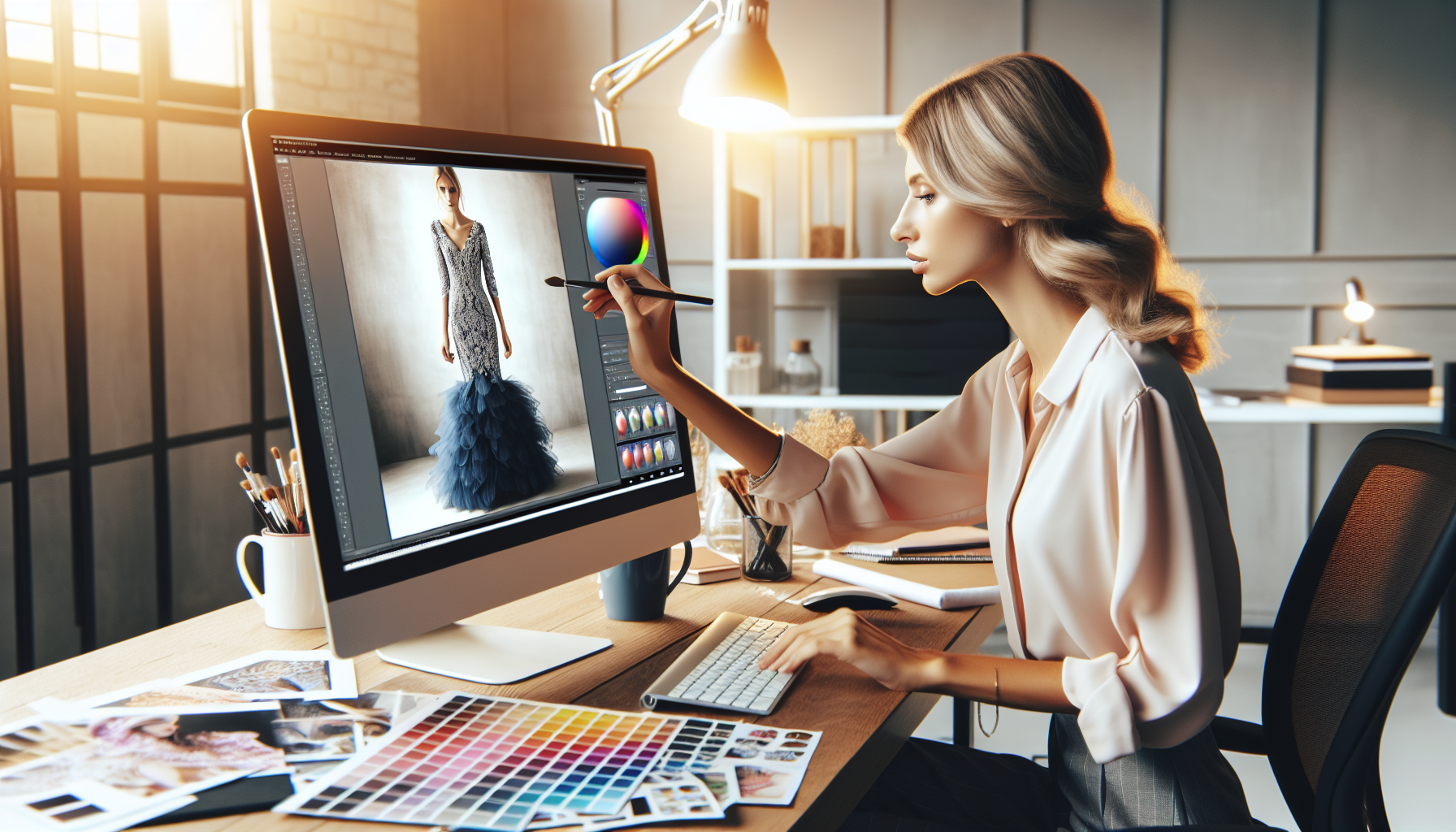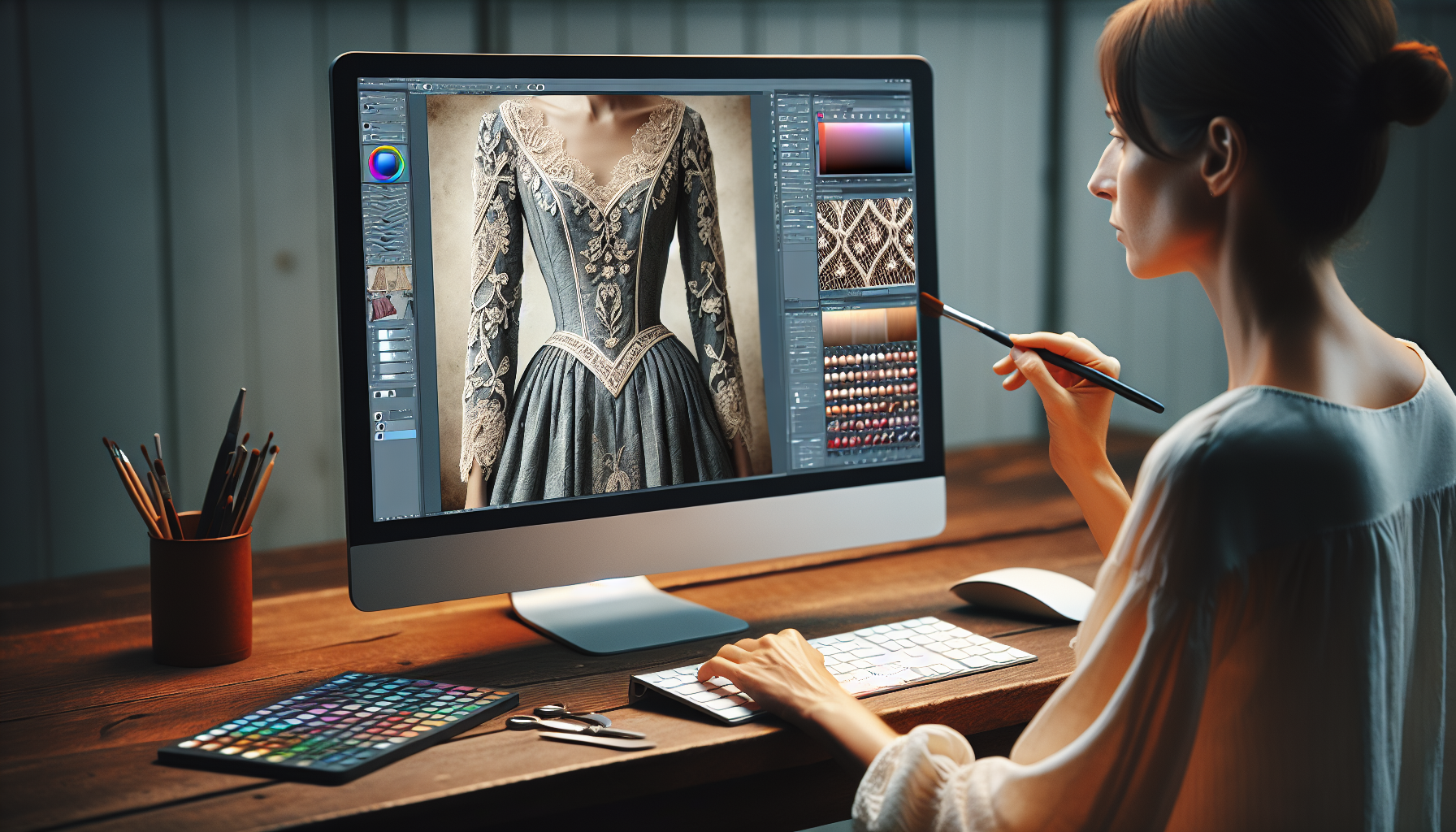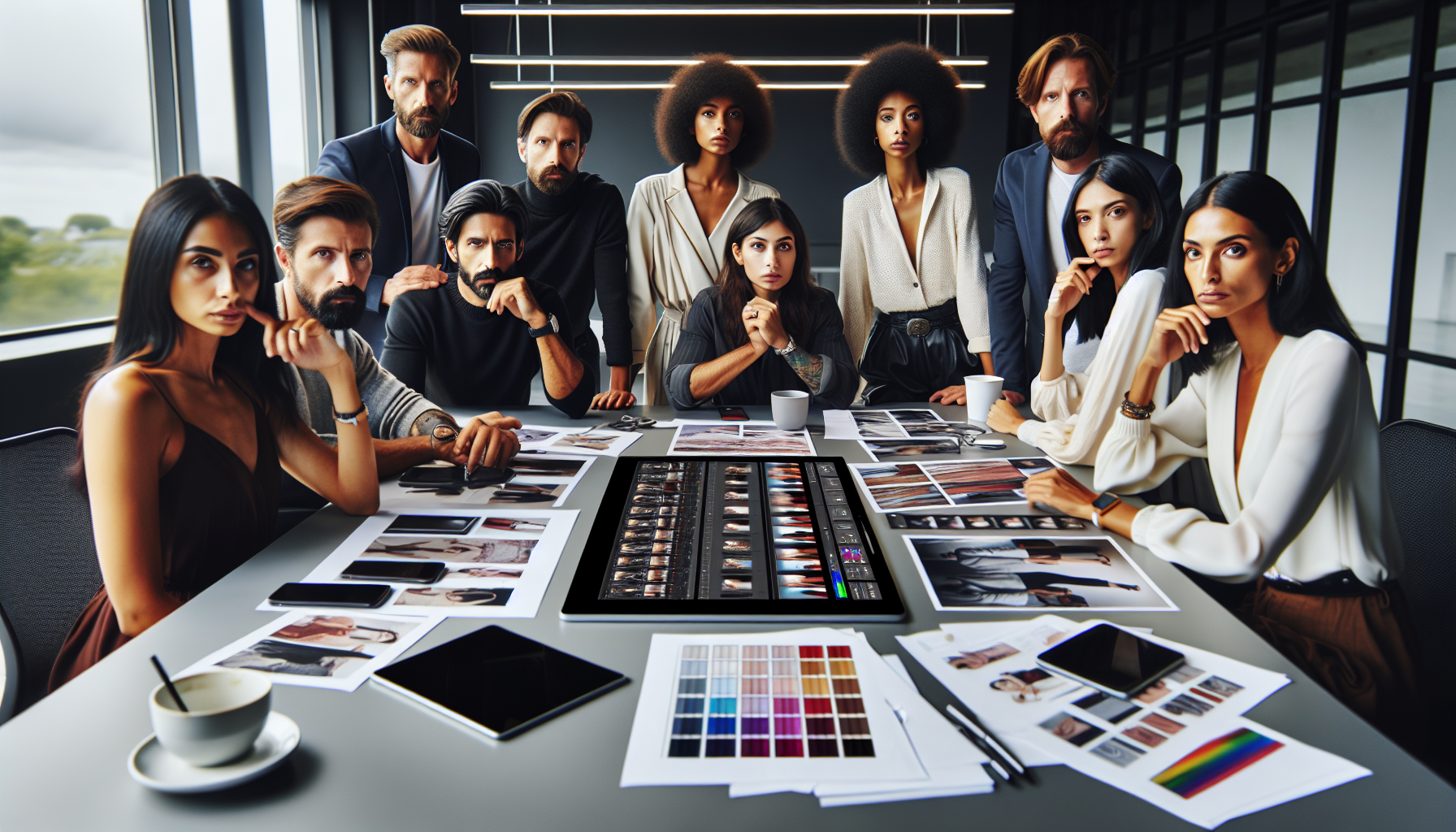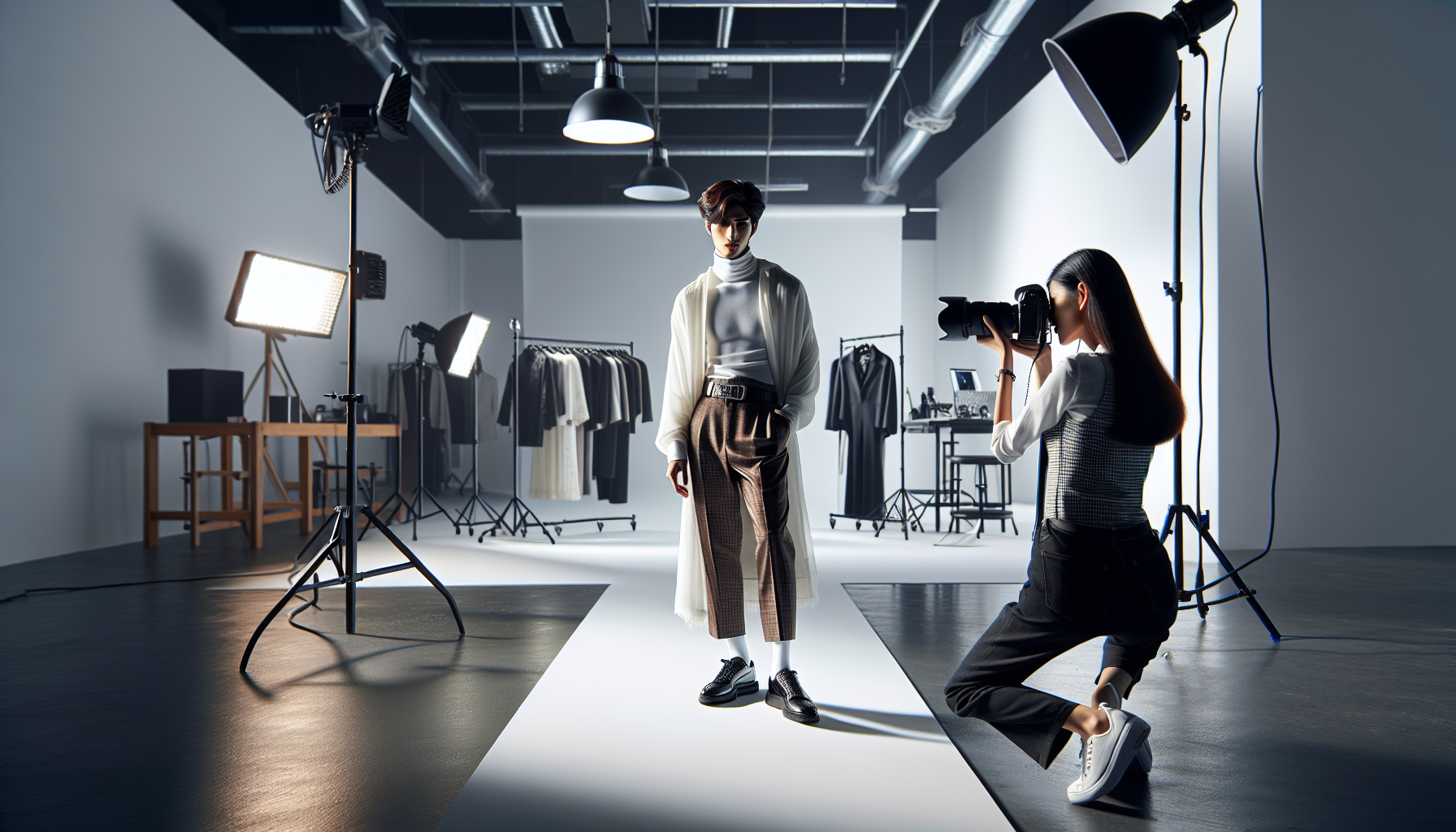
For professional editors working behind the scenes, mastering advanced fashion editing techniques is the key to transforming good photos into sales-driving visuals. The subtle nuances of shadow, texture, and color accuracy can make or break a customer’s decision to click “add to cart.” As competition intensifies and customer expectations rise, simply knowing the basics isn’t enough. You need to dive deep into advanced methodologies to consistently deliver images that not only showcase clothing but also evoke desire and trust.
This article is designed to elevate your fashion editing skills. We’ll move beyond basic adjustments and explore sophisticated techniques that are essential for creating impeccable e-commerce photographs. Whether you’re aiming for seamless background removals, perfecting fabric textures, or ensuring color consistency across an entire product line, these advanced strategies will provide you with the expertise needed to meet the demanding standards of today’s online fashion market and ensure your clients’ products always look their absolute best.
Key Takeaways:
- Mastering Non-Destructive Editing: Learn to leverage layers and masks for flexibility and control in your workflow.
- Advanced Color Correction: Dive into techniques for achieving perfect color accuracy and consistency across diverse lighting conditions and fabrics.
- Expert-Level Retouching: Discover methods for refining garment details, smoothing textures, and enhancing fabric drape while maintaining a natural and realistic look.
- Ghost Mannequin Mastery: Elevate your ghost mannequin edits with refined techniques for seamless joins and realistic depth.
- Shadow and Highlight Sculpting: Understand how to manipulate light and shadow to add dimension and visual appeal to flat product shots.
- Workflow Optimization for High Volume: Explore strategies to boost efficiency and consistency when handling large batches of fashion images.
- Staying Ahead of Trends: Keep informed about the latest advancements in fashion e-commerce image editing and adapt your skills accordingly.
Non-Destructive Editing: The Foundation of Professionalism
In the realm of professional fashion editing, non-destructive editing is not just a preference; it’s a necessity. Think of it as building with Lego bricks rather than clay. Each adjustment you make is on a separate layer, allowing you to tweak, remove, or completely rethink edits without permanently altering the original image data. This approach offers unparalleled flexibility and control, essential when dealing with the complex and often iterative nature of fashion image post-production.
Layers: Your Editing Powerhouse
Layers are the cornerstone of non-destructive editing. Imagine each layer as a transparent sheet stacked on top of your original image. You can make edits – color adjustments, retouching, background removal – on these layers without directly affecting the base image. If you need to undo a change, simply delete or modify that layer. This is crucial for maintaining image quality and allowing for client feedback and revisions.
Masks: Precision and Control
Masks take non-destructive editing a step further by allowing you to selectively apply adjustments. Instead of applying a color correction to the entire image, you can use a mask to target only the garment, leaving the background untouched. There are various types of masks – layer masks, clipping masks – each offering unique ways to refine your edits with precision. For instance, when working on intricate lace or delicate fabrics, using precise masks ensures that your retouching only affects the intended areas, preserving the integrity of the texture and details.
Expert Opinion:
“Non-destructive editing is the backbone of our workflow at Pixel By Hand,” states Paul Lloyd, Founder of Pixel By Hand. “In fashion e-commerce, consistency and adaptability are key. Layers and masks allow our team to deliver high-volume, high-quality edits efficiently while easily accommodating client-specific requests and revisions. It’s not just about fixing mistakes; it’s about building a flexible and robust editing process.”
Advanced Color Correction: Achieving True-to-Life Hues
Color is paramount in fashion e-commerce. Customers need to see the true color of a garment to make informed purchasing decisions. Basic color correction can address white balance and overall tint, but advanced techniques are essential to tackle the nuances of fabric colors, varying lighting conditions, and the consistency required across large product ranges.
Beyond White Balance: Targeted Color Adjustments
Advanced color correction moves beyond global adjustments. It involves targeting specific color ranges within an image. Imagine a vibrant red dress that appears slightly muted in the photograph. Instead of boosting the saturation for the entire image (which could oversaturate other elements), you can use tools like selective color adjustment layers or HSL (Hue, Saturation, Luminance) adjustments to target only the reds and bring out their vibrancy, keeping other colors balanced and natural.
Color Consistency Across Product Lines
For e-commerce stores with extensive product lines, color consistency is vital. Shooting products under different lighting conditions or across multiple photoshoots can lead to variations in color. Advanced color matching techniques are essential to ensure that a “true red” dress looks the same shade of red across all product images, regardless of the original shooting conditions. This can involve using color charts during photography and employing sophisticated color grading techniques during post-production to harmonize the colors across different images.
Case Study:

A mid-sized fashion retailer, “Style Haven”, struggled with color inconsistencies in their product images. Their catalog featured items photographed in different studios and lighting setups, leading to customer complaints about color mismatches between online images and the actual products. By partnering with Pixel By Hand and implementing advanced color correction workflows, including targeted color adjustments and consistent color profiling, Style Haven achieved a significant reduction in customer returns related to color discrepancies. This not only improved customer satisfaction but also streamlined their operations by reducing the costs associated with returns and exchanges.
Expert-Level Retouching: Refining Garments to Perfection
Fashion retouching is an art form that goes far beyond simply removing blemishes. It’s about enhancing the garment’s appeal while maintaining a natural and realistic look. Advanced retouching techniques focus on refining fabric texture, perfecting drape, and subtly enhancing details without making the clothing appear artificial or overly processed.
Texture Enhancement: Bringing Fabrics to Life
High-quality product images need to showcase fabric texture effectively. Advanced retouching can subtly enhance the natural texture of materials like silk, denim, or knitwear. Techniques like frequency separation or targeted sharpening can be used to bring out the weave of a fabric or the subtle sheen of satin, making the garment look more tactile and appealing online. The key is subtlety – the goal isn’t to invent texture, but to enhance what’s already there and ensure it translates well on screen.
Drape and Form: Sculpting the Garment
Clothing rarely falls perfectly in a photograph straight out of the camera. Advanced retouching techniques are used to subtly refine the drape and form of garments. This could involve gently adjusting wrinkles, smoothing out unwanted bunching, or subtly reshaping areas to create a more flattering and visually appealing silhouette. The aim is to make the clothing look its best on the model or mannequin, while maintaining a natural and believable appearance. Over-retouching in this area can lead to garments looking stiff or unnatural, which is detrimental to the perceived quality of the product.
Detail Enhancement: Subtle but Impactful
Small details can make a big difference in fashion photography. Advanced retouching includes techniques to subtly enhance details like seams, buttons, zippers, or embellishments. This might involve gently sharpening these elements to draw the viewer’s eye or adjusting contrast to make them stand out without looking artificial. The goal is to highlight the craftsmanship and design details of the garment, further enhancing its perceived value.
Ghost Mannequin Mastery: Seamless and Realistic
The ghost mannequin technique, also known as invisible mannequin, is a staple in e-commerce fashion photography. It allows customers to see clothing in a 3D form without the distraction of a visible mannequin or model. While the basic technique is widely used, advanced ghost mannequin editing takes it to a new level of seamlessness and realism.
Seamless Joins: The Art of Invisibility

The key to a successful ghost mannequin edit is creating seamless joins where the front and back pieces of the garment are combined. Advanced techniques involve precise masking and blending to ensure that there are no visible seams or unnatural transitions. This often requires careful attention to shadow and highlight continuity, ensuring that the lighting and shading flow smoothly across the joined areas, making the mannequin truly “invisible.”
Creating Realistic Depth and Dimension
Beyond seamless joins, advanced ghost mannequin editing focuses on creating realistic depth and dimension. This involves carefully adding shadows and highlights to mimic how the garment would naturally fall on a body. Subtle shadows under the arms, along the sides, and at the hem help to create a sense of volume and prevent the garment from looking flat or pasted onto a background. Attention to detail in these areas dramatically enhances the perceived quality and realism of the ghost mannequin image.
Shadow and Highlight Sculpting: Adding Dimension to Flat Lay and On-Model Shots
Effective use of shadows and highlights is crucial for adding depth and visual interest to fashion photographs, whether they are flat lay shots or images featuring models. Advanced techniques go beyond simply adding a generic drop shadow and involve carefully sculpting light and shadow to enhance the garment’s shape, texture, and overall appeal.
Sculpting with Light: Creating Form and Shape

Shadow and highlight sculpting involves using dodging and burning techniques to selectively lighten highlights and darken shadows within the image. In fashion editing, this is used to emphasize the contours of a garment, accentuate folds and drapes, and create a more three-dimensional appearance. For example, on a flat lay shot of a jacket, subtle shadows can be added along the lapels and seams to give it more structure and prevent it from looking completely flat. On model shots, carefully sculpted shadows can enhance the form-fitting aspects of clothing and create a more dynamic and visually engaging image.
Creating Natural Shadows: Grounding the Image
Beyond sculpting form, creating natural-looking shadows is essential for grounding the garment in the image space. This is particularly important for ghost mannequin and product-only shots. Subtle contact shadows beneath the garment and soft drop shadows that mimic realistic light sources add depth and prevent the product from appearing to float unnaturally. The key is to observe how light behaves in real life and replicate those nuances in your edits, paying attention to shadow softness, direction, and falloff.
Workflow Optimization for High Volume Fashion Editing
Professional fashion studios often deal with high volumes of images, especially during peak seasons or for large e-commerce catalogs. Efficient workflows are essential to maintain quality while meeting tight deadlines. Advanced workflow optimization involves leveraging automation, creating reusable presets and actions, and establishing clear communication channels within the editing team.
Automation and Batch Processing: Streamlining Repetitive Tasks
Automating repetitive tasks is crucial for high-volume editing. Actions and scripts in software like Adobe Photoshop can automate common adjustments like background removal, basic color correction, and applying watermarks. Batch processing allows you to apply these automated actions to entire folders of images, significantly speeding up the editing process for large product ranges. However, it’s important to remember that automation is most effective for consistent tasks. Complex edits and nuanced retouching still require manual attention from skilled editors.
Presets and Actions: Consistency and Efficiency
Creating reusable presets and actions is another key strategy for workflow optimization. Presets for color grading or sharpening can be developed and applied consistently across product lines to maintain a unified brand aesthetic. Actions can record sequences of editing steps for specific tasks, like creating ghost mannequin effects or applying specific retouching techniques. These pre-built tools reduce setup time for each image and ensure consistency across large batches of edits.
Clear Communication and Feedback Loops
Even with automation and presets, clear communication and feedback loops are vital in a high-volume editing environment. Tools like Pixel By Hand’s proprietary online platform, designed for detailed feedback on batches of images or specific parts of images, streamline the review and revision process. Clear communication channels between photographers, stylists, and editors ensure that everyone is aligned on brand guidelines, style preferences, and specific retouching requirements. This reduces misunderstandings, minimizes revisions, and ultimately contributes to a more efficient and streamlined workflow.
Staying Ahead of Trends: Adapting to the Evolving Landscape

The world of e-commerce fashion and image editing is constantly evolving. New trends in visual presentation, changes in customer expectations, and advancements in editing technology all require professional editors to stay informed and adapt their skills.
Embracing New Technologies and Software Updates
Software updates often bring new features and tools that can significantly enhance editing workflows. Staying updated with the latest versions of editing software and exploring new plugins or extensions can unlock more efficient techniques and creative possibilities. For instance, advancements in AI-powered tools for background removal or content-aware fill can speed up certain aspects of editing, allowing editors to focus on more nuanced and creative tasks.
Adapting to Evolving Aesthetic Trends
Fashion photography trends change over time. What was considered a desirable aesthetic a few years ago might look dated today. Staying attuned to current trends in fashion magazines, online retail platforms, and social media is important for ensuring that your editing style remains relevant and appealing to today’s consumers. This might involve adapting your retouching approach to favor more natural-looking skin tones, incorporating current color grading styles, or adjusting your shadow and highlight techniques to align with prevailing visual trends.
Continuous Learning and Skill Development
The field of image editing is a continuous learning journey. Participating in workshops, online courses, and industry events helps professional editors stay at the forefront of their craft. Learning new techniques, experimenting with different styles, and constantly seeking to refine your skills are essential for long-term success in the dynamic world of fashion e-commerce image editing.
Mastering advanced fashion editing techniques is a continuous journey, but one that is essential for any professional editor looking to excel in the competitive e-commerce landscape. By implementing these advanced strategies, you can elevate the quality of your work, streamline your workflows, and consistently deliver images that not only meet but exceed the expectations of today’s discerning online shoppers. Pixel By Hand remains dedicated to supporting professional photo studios in this endeavor, offering customized solutions and expert editing services to ensure your fashion imagery always makes the perfect impression.